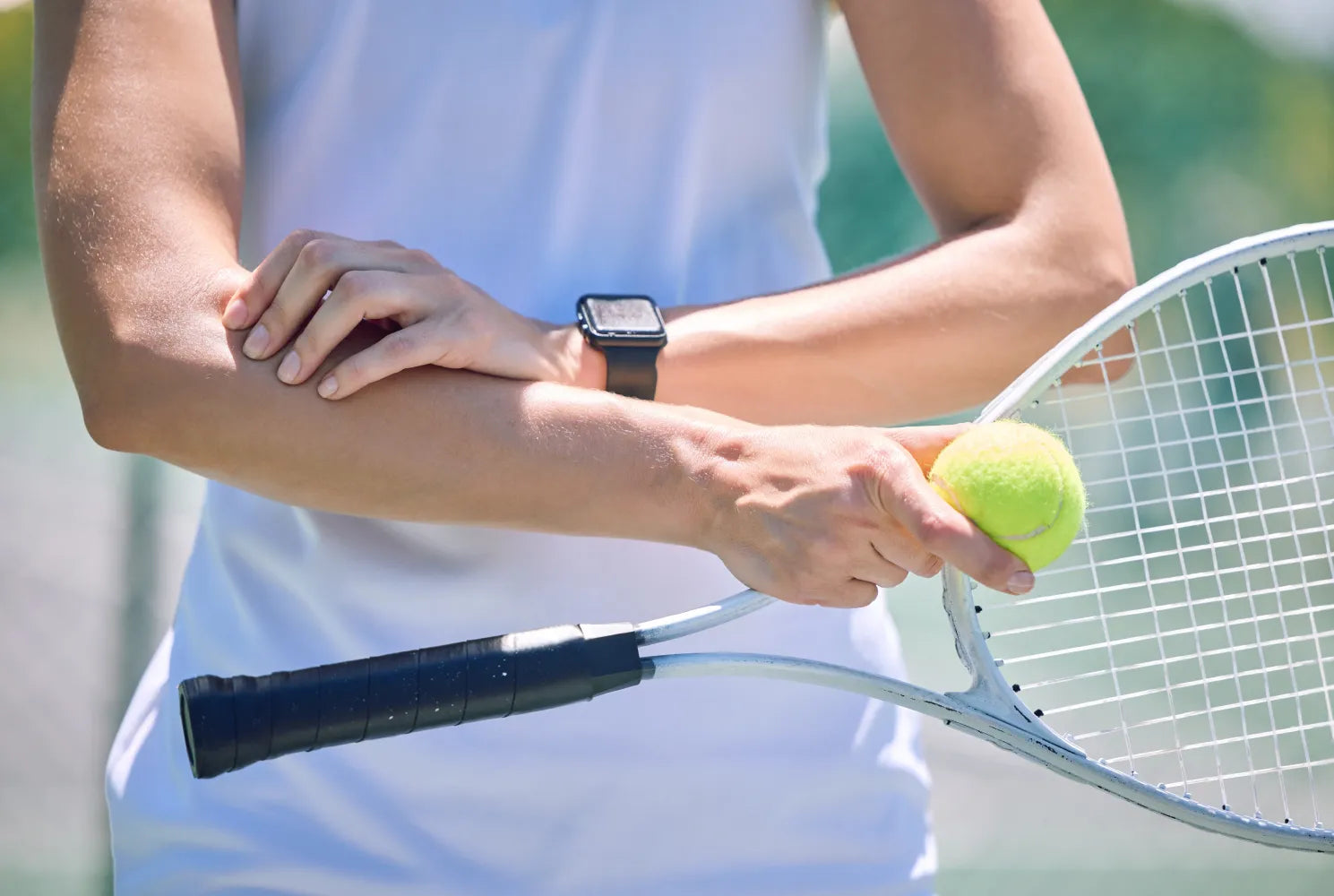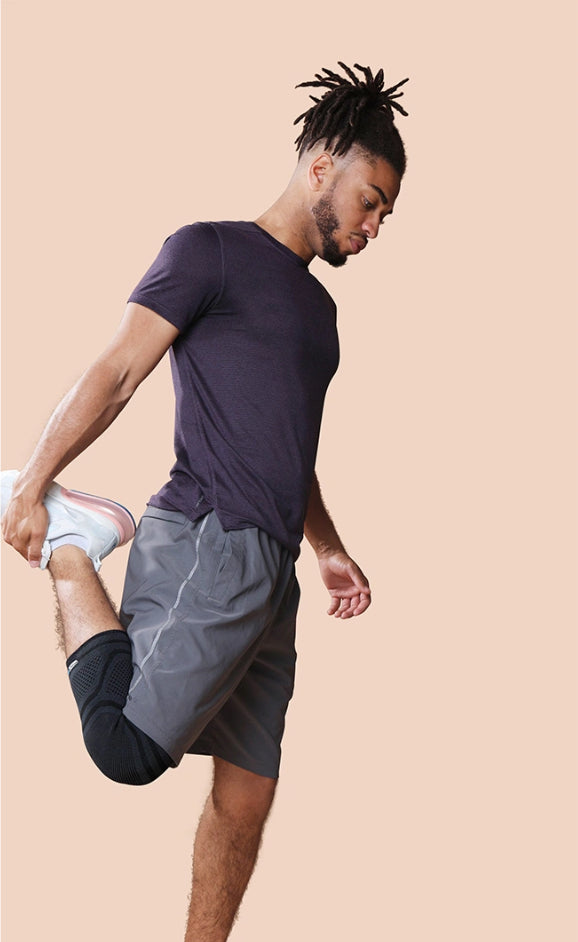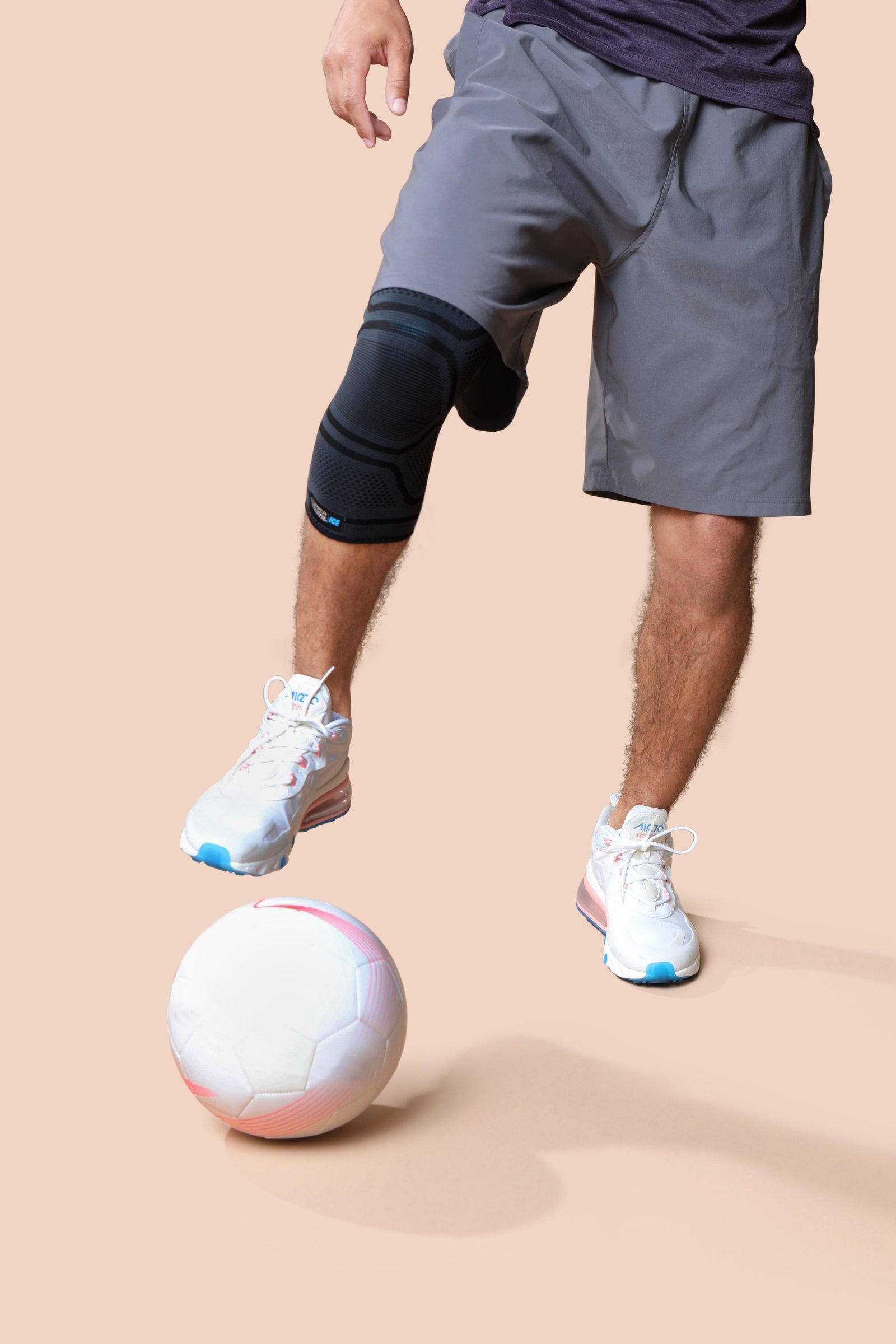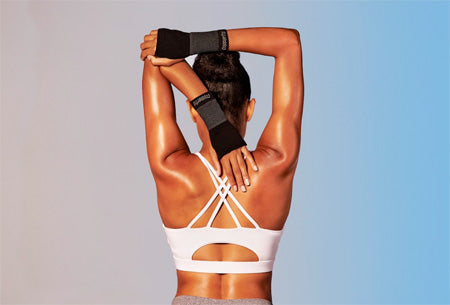
Gripping a weight. Opening a jar. Carrying groceries. When simple, everyday movements start to bring on elbow discomfort, it’s hard to ignore.
That tension can sneak up gradually or hit suddenly—and either way, it can slow you down. Whether you’re lifting at the gym, working with tools, or just trying to get through your daily routine, elbow soreness when gripping is something a lot of people experience.
The good news? It doesn’t always mean something serious. Often, it’s a sign your body needs a little extra support, a bit more recovery, or a few adjustments in how you move. Let’s break down what that discomfort might feel like and the common causes behind it.
What Does Elbow Discomfort Feel Like?
Discomfort when gripping isn’t one-size-fits-all. For some people, it feels like a dull ache around the outer elbow. For others, it’s a sharper tension when holding or squeezing something—like a dumbbell, steering wheel, or even a coffee mug.
You might notice stiffness, soreness, or a tender spot that lights up during certain motions. The feeling might extend down your forearm or sit right at the joint. It could show up during your workout or linger for a while after you’ve finished gripping something.
Any of these sensations are worth paying attention to. They’re your body’s way of saying something’s off—and that’s your cue to explore what’s behind it.
What Can Cause Elbow Discomfort When Gripping?
Understanding the root cause of your discomfort can help you find the best ways to relieve it. Here are a few common culprits of gripping-related elbow discomfort.
1. Overuse and Repetitive Strain
One of the most common reasons for elbow tension is simple overuse. Gripping is a repetitive motion, and whether it’s part of your job, your workouts, or your daily life, doing it too often without enough rest can lead to soreness.
This happens when the muscles and tendons around the elbow are repeatedly loaded without enough time to recover. That strain builds up over time and can leave you with lingering discomfort. Weightlifters, climbers, and even people who spend hours typing or using tools often deal with this kind of muscle fatigue.
In these cases, discomfort can be your body’s way of signaling that it needs a break. Rest days, alternating between grip-heavy and grip-light activities, and making sure your recovery game is strong can all help reduce this type of tension.
2. Tendon Stress From Improper Form
Form matters—especially when you’re putting stress on the elbows. If your wrists or elbows aren’t aligned during exercises like curls, presses, or rows, you might be putting extra load on your tendons without realizing it.
This can lead to sharp, pinpointed discomfort that shows up during workouts or heavy lifting. It’s especially common in activities that involve repetitive wrist extension or flexion—think racquet sports, barbell training, or even prolonged use of hand tools.
The fix? Slow down and check your technique. Keep your wrists and elbows aligned. Don’t overload the weight. And if you’re unsure, work with a coach or trainer to get a form check. Small changes in movement patterns can make a big difference in how your joints feel.
3. Muscle Imbalances
Muscles work best when they’re balanced. If your forearm flexors (the muscles that help you grip) are overdeveloped compared to your extensors (the muscles that open the hand), it can throw off how your elbow functions. That imbalance creates tension across the joint, especially when you ask your arms to perform under pressure.
This is a common issue for people who focus heavily on grip strength or lifting without adding in exercises for opposing muscle groups. When one side is doing all the work, discomfort tends to follow.
To keep things balanced, include exercises that strengthen both the front and back of your forearms—like reverse wrist curls, wrist extensions, and grip-release movements. Supporting the whole arm structure helps keep the elbow moving smoothly and reduces the chances of soreness showing up during grip-heavy tasks.
4. Nerve Compression or Irritation
Not all elbow discomfort starts in the muscles. In some cases, nerves are the ones sending the signal that something’s off—especially if you're feeling tingling, numbness, or a strange zapping sensation when you grip or twist your arm.
Two nerves run through the elbow and forearm area: the ulnar nerve and the radial nerve. These nerves are responsible for sensations in your hand and control some of the muscles involved in gripping.
When one of them gets compressed—maybe from repetitive bending, leaning on the elbow, or tight surrounding tissue—it can lead to discomfort and noticeable changes in how your arm or hand feels.
This type of tension is common in people who work at desks, hold tools for extended periods, or rely on repetitive arm motions throughout the day. If you’re gripping or leaning in ways that place direct pressure on the elbow joint or inner arm, the nerves can become irritated.
Supporting healthy posture, taking breaks, and changing up your arm positioning can go a long way. Gentle mobility work, stretching, and avoiding constant pressure on the elbow may help reduce nerve stress and keep you moving more comfortably.
5. Sudden Increase in Activity or Intensity
Sometimes, elbow discomfort shows up because of how quickly you increased your activity—not just how much you’re doing. If you go from minimal gripping work to a high-intensity routine with weights, resistance bands, or new sports movements, your elbows might respond with soreness, stiffness, or strain.
This happens because your tendons and soft tissues need time to adapt to new loads. Even if your muscles feel ready, the surrounding structures like ligaments and tendons might still be catching up. It’s not a setback—it’s a natural part of how your body adjusts.
This kind of soreness usually shows up a day or two after the activity, especially if the movement is brand new or more intense than usual. If you’re starting a new grip-heavy workout, returning after a break, or pushing your limits, go gradually. Building strength and stamina is a process, and pacing yourself helps keep discomfort from getting in the way of your progress.
Recovery also matters here. Cooling down after intense activity, hydrating, and incorporating rest days can give your elbows a chance to recover so they’re ready to support your next move.
6. Cold, Stiff Muscles and Lack of Warm-Up
We can be tempted to skip a warm-up and jump right into an intense workout or task—but it can be one of the quickest ways to trigger elbow discomfort, especially during the colder months. When your muscles are cold and stiff, they’re less prepared to handle the demands of gripping, pulling, or lifting. That extra tension can travel straight to the elbow joint.
Warming up isn’t just about getting your heart rate up. For your elbows, it’s about prepping the forearms, wrists, and hands for movement. Muscles that are warm and flexible are more capable of absorbing force and supporting joint function. That leads to smoother movement, less tension, and fewer post-workout surprises.
A strong pre-activity routine could include:
- Wrist rolls and circles
- Light grip squeezes and releases with a soft ball
- Resistance band wrist extensions and flexions
- Gentle forearm stretches
These moves increase blood flow, activate the right muscle groups, and get your elbows ready to work without unnecessary strain.
Tips for Preventing and Managing Elbow Discomfort
If you’re noticing tension or soreness during or after gripping, you don’t have to just wait it out. There are several ways to actively support your body and minimize elbow discomfort.
Rotate Your Activities
Don’t overload the same motions every day. If your workouts or job rely heavily on gripping, alternate your tasks to give those muscles a break.
When working out your arms, include both flexor and extensor movements in your workouts. Reverse wrist curls, forearm extensions, and grip-release exercises help maintain strength balance and joint stability.
Focus on Form
Check your wrist and elbow alignment during exercises or repetitive tasks. Small changes in angle or grip position can relieve pressure on the joint and reduce strain.
Incorporate Rest and Recovery
Rest days aren’t optional—they’re essential. Give your muscles and tendons time to rebuild between grip-intensive sessions. Active recovery, like stretching or compression, also helps support healthy circulation and muscle relaxation.
Try Compression Therapy
Gentle compression therapy at the area of discomfort can help support healthy blood flow to the area, carrying nutrients and oxygen to the surrounding muscles. This can help promote relaxation and ease soreness when exercising or gripping.
Improve Your Workspace or Tools
Small changes in the tools you use daily—like adding ergonomic grips, changing your desk setup, or switching to a more supportive mouse—can lower repeated stress on your elbow joint.
When To Seek Support
Most mild elbow soreness gets better with rest, recovery, and a few small changes. But if your discomfort becomes sharp, persistent, or starts to interfere with daily tasks, it’s worth talking to a medical professional.
Signs like swelling, ongoing numbness, or loss of grip strength shouldn’t be ignored. The earlier you get support, the easier it is to get back to what you love doing.
The Bottom Line
At Copper Fit, we know how frustrating it can be when elbow discomfort gets in the way of your movement. You’re putting in the work, trying to stay active, and then something as simple as gripping a weight or carrying a bag becomes uncomfortable. That’s why we focus on real, supportive solutions—because staying strong and active shouldn’t mean dealing with constant tension.
If you're experiencing elbow soreness, you’re not alone—and there are ways to support your recovery while continuing to move forward. Keep listening to your body, take care of your joints, and give yourself the space to recover when needed.
You’ve got this—and we’ve got your back (and elbows).
Sources:
Overuse Injuries of the Elbow | PubMed
Ask Healthy Living: Are Exercise Injuries More Common In The Cold? | HSS
The effect of warm-ups with stretching on the isokinetic moments of collegiate men | PMC
Adding Variety to Your Exercise Program | University Hospitals





